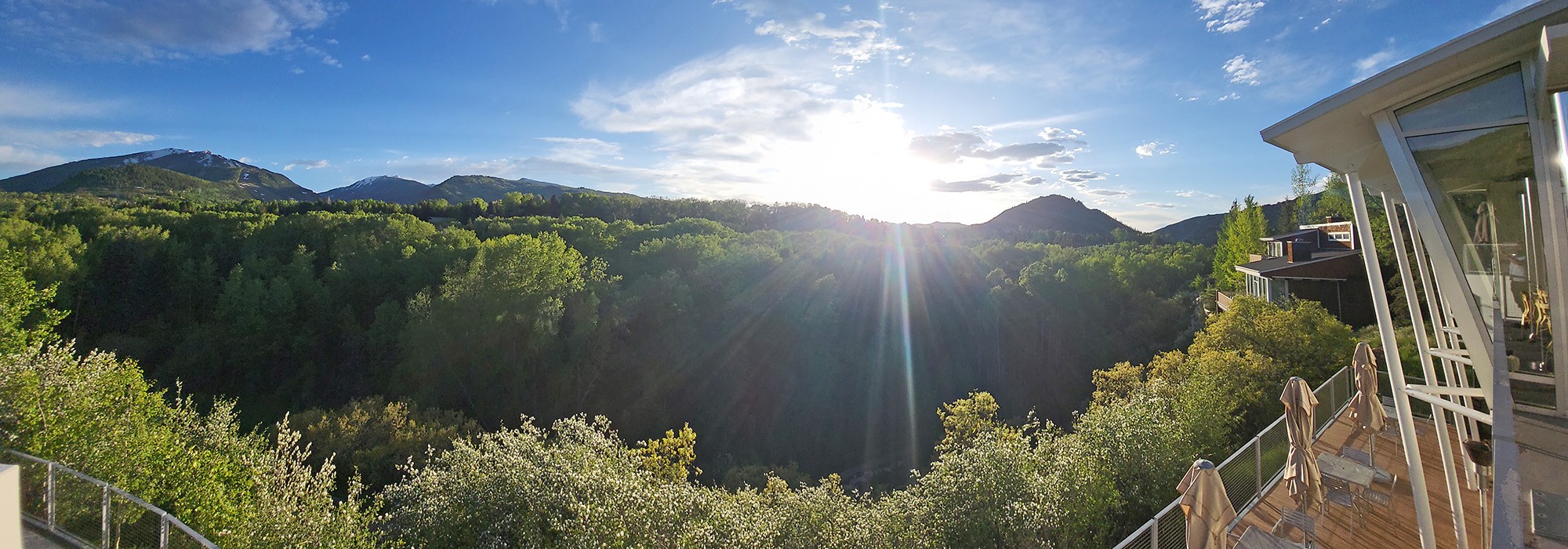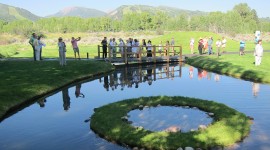Experiencing the Rockies - Inside and Out
Aspen, CO, is in the pantheon of places known for extraordinary scenic beauty with its snowcapped mountainscapes, towering firs, and vast steads of its signature white-trunked Aspen trees with their “quaking” leaves; this was the backdrop to The Cultural Landscape Foundation’s (TCLF) Aspen Excursion on Friday, June 2. But a lesser known, infrequently visited wonder is a mine with a rich vein of marble being quarried in the aptly named nearby town of Marble; a tour of that site two days earlier was the extraordinary Aspen Excursion precursor organized by Colorado Quarries, ABC Stone, and Vermont Quarries.
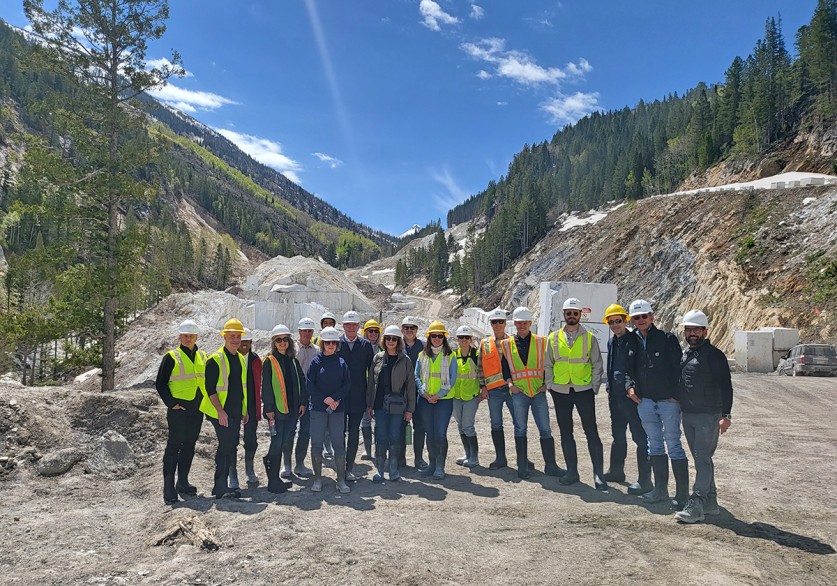
Clad in steel toed boots, hard hats, and other required safety equipment, some twenty participants were driven about 1,000 feet above “base camp” along a vertiginous mountain road (with amazing views) to the mine’s entrances. Giant rectangular blocks of marble each weighing tens of thousands of pounds lined the above ground roadways of the mine complex. The interior was reminiscent of Piranesi’s vast and cinematic “carceri” etchings and Escher’s disorienting vistas. Within the upper part of the mine, 80,000-pound blocks were being carefully extracted from the walls. The ground was covered in a viscous muddy slurry of water and grey marble dust; the lighting was also theatrical, alternating between cinema verité and film noir. In the lower portion of the mine, we witnessed a “wall drop” – a hewn, 600,000-pound, 40-foot-tall rectangular block that was pulled from the wall and landed, in a single piece, face down in the slurry. Talk about dramatic; it was awe-inspiring.
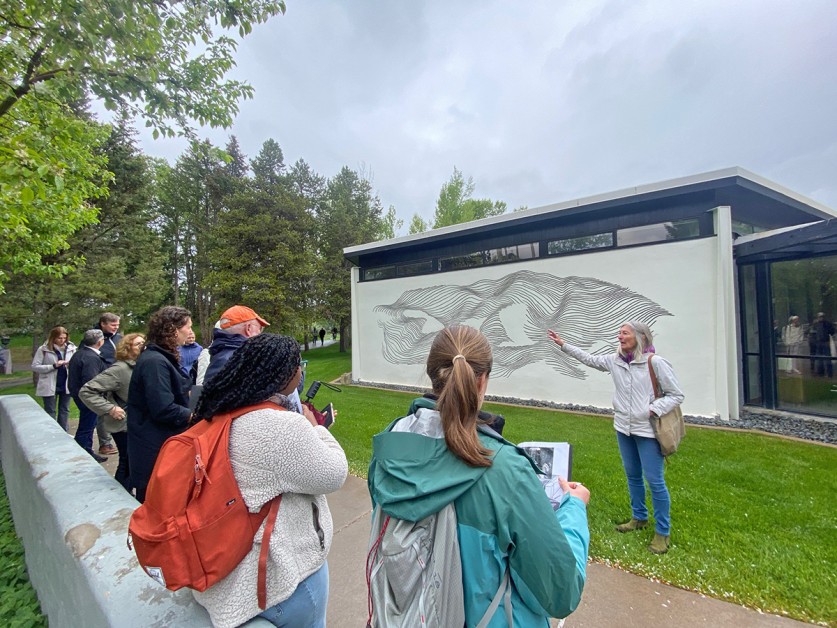
Following that other-worldly experience, TCLF’s daylong Aspen Excursion began with a tour of the 40-acre Aspen Institute for Humanistic Studies, led by former TCLF Board Member, Ann Mullins. Founded in 1949, the Aspen Institute is a world-renowned gathering place for great thinkers and doers. It is also home to pioneering examples of site-specific sculptures and earthworks by the influential Bauhaus artist Herbert Bayer that were installed over a two-decade period starting in 1955. These icons were not only precursors of the earthworks movements of the 1960s and 1970s, they also presaged the environmental art of the 1980s. Bayer was also responsible for the Institute’s master plan and influenced everything from the architecture to the graphic design elements.
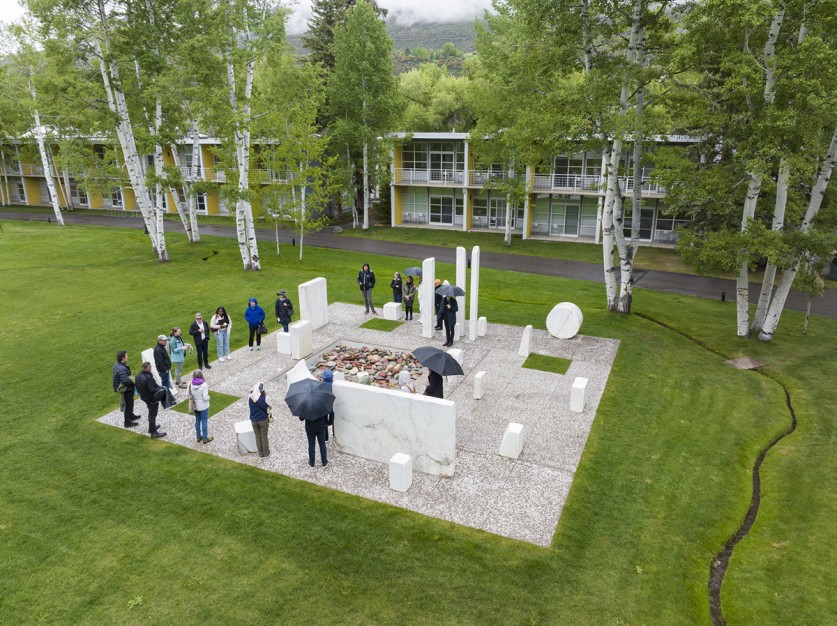
Next, TCLF Board Member Tina Bishop, from Mundus Bishop, along with co-excursion curator TCLF Board Member Margaret “Meg” Plumb, from Design Workshop, escorted participants through the predominantly brick-clad Aspen Pedestrian Mall, which first began in the mid-1950’s as tourists and new residents began to visit and live in Aspen. In the 1970’s Robin Molny, a student of Frank Lloyd Wright, led the master planning effort that converted three acres of downtown streets to a car-free zone. The project, which was completed in 1976, aligned with national trends in urban design to pedestrianize public space and reflected the collective thought of the mountain naturalists to bridge Aspen’s urban fabric with its natural environment. Today, the Aspen Pedestrian Mall is that rare success story out of more than 200 similar projects that failed, and thanks to recent revitalization efforts it continues to thrive as an urban park -- one that was recently recognized by the American Planning Association as one of the Great Places in America.
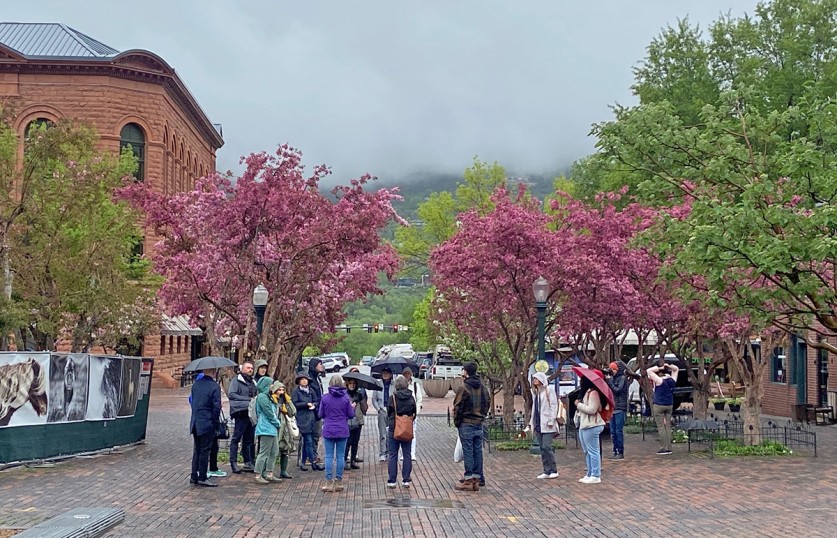
The tour continued at the Soldner Center, an idiosyncratic and enchanting residence that was hand built by the artists Paul and Ginny Soldner, a ceramicist and a painter, respectively. The home, a Modernist rift on barn-meets-ranch-meets-A-Frame-meets-stupa, features an innovative use of a mélange of materials, including wood and stone. The Soldners also shaped the landscape, planted the trees, and were early adopters of solar energy. The Center now serves as an early Aspen example of the integration of arts, architecture, environment, energy, and community. The engrossing and fascinating tour was led by the Soldners’ daughter, Stephanie.
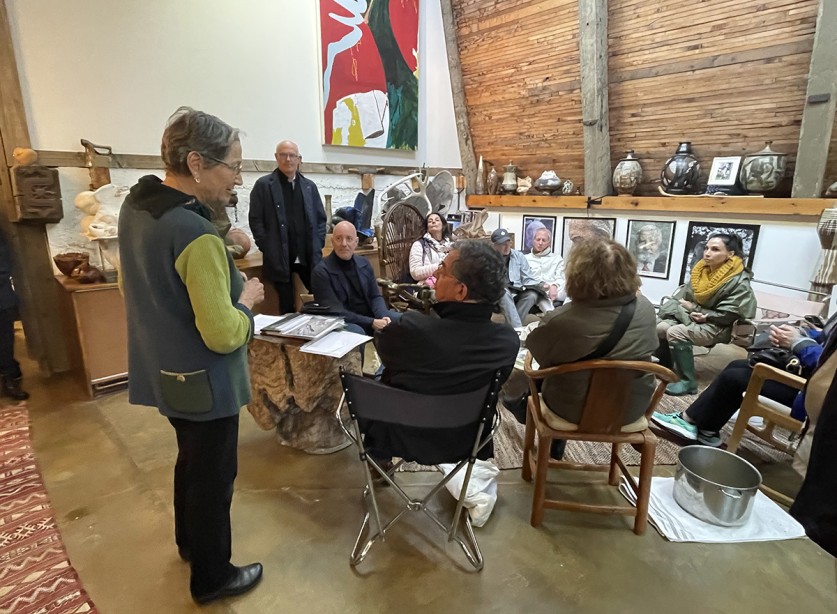
The day concluded at DBX Ranch, designed by Aspen-based landscape architecture firm Design Workshop, and the recipient of the National Award of Excellence in Residential Design from the American Society of Landscape Architects. Guests were treated to flutes of champagne while Richard Shaw and former TCLF Board Member Mike Albert from Design Workshop provided a detailed, illustrated introduction to the property. The residence – a compound of structures designed in the modern ranch vernacular by architect Cristof Eigelberger – is unified by the careful placement of layered and interconnected outdoor gathering spaces and curated native plant communities. A singular palette of stone and wood seamlessly connects indoor and outdoor space through simple and compelling expressions. The property is punctuated with sculptures by Antony Gormley and Tony Cragg, and a Jenny Holzer “truism” bench. Context-sensitive and sustainable strategies address water quality, reforestation and visual character, restoring ecological integrity to this once-derelict site.
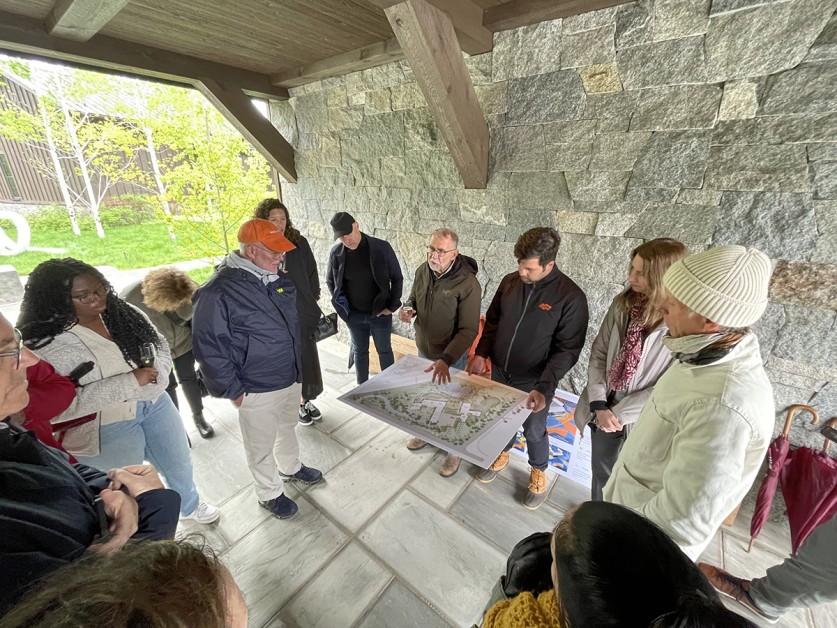
The cross section of places and experiences – both above and below ground – reinforced the uniqueness of Aspen and provided unforgettable memories. This was all made possible by the generosity of sponsors – ABC Stone, Vermont Quarries, Colorado Quarries, and architect Cristof Eigelberger, who along with ABC Stone underwrote the exceptional lunch at Duemani – expert guides Ann Mullins, Tina Bishop, Stephanie Soldner, Richard Shaw, and Mike Albert, and TCLF Board Member Plumb who was instrumental in initiating and organizing this exceptional adventure.
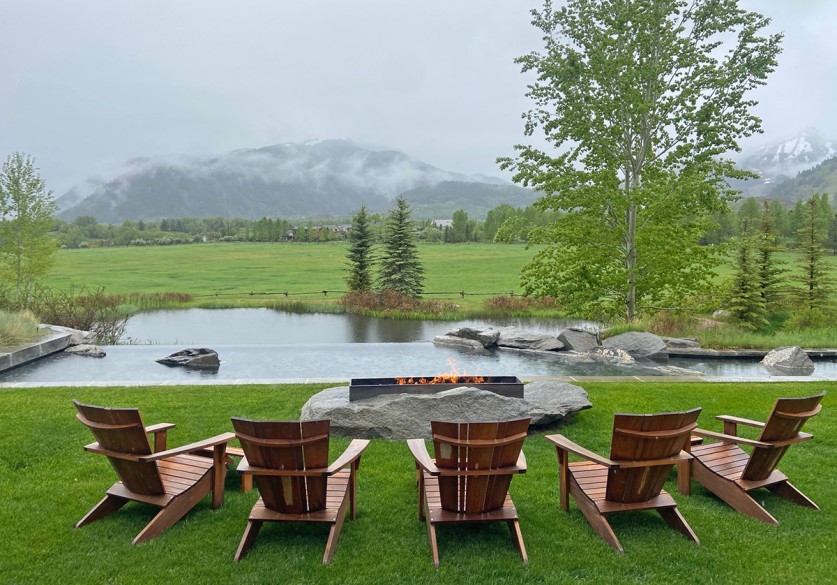
TCLF’s next excursion will take place on Friday, October 23, 2023, in Minneapolis and features a quartet of exceptional residential projects by Coen + Partners (and a luncheon) and is nearly sold out. The excursion will be followed by a separately ticketed reception at Orchestra Hall overlooking Peavey Plaza, a site listed in the National Register of Historic Places that was originally designed by landscape architect M. Paul Friedberg and later rehabilitated by Coen + Partners.



